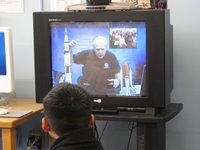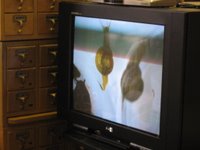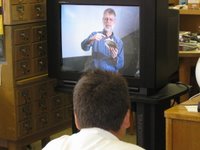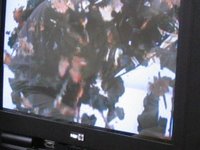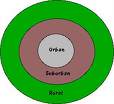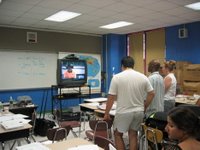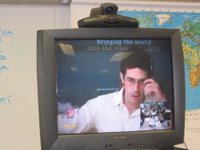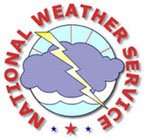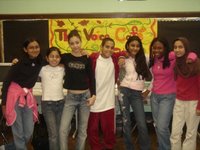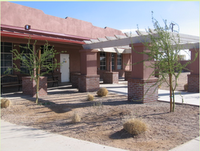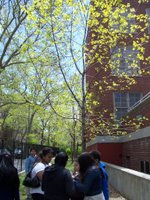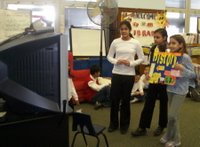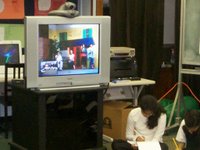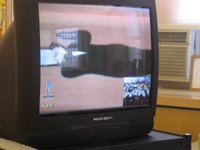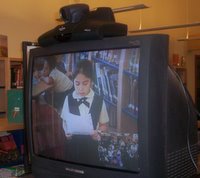
Hey did you know that you can't get warts from touching a frog? Even if the frog is full of warts like the ones from the Lee Richardson Zoo in Kansas. This week a sixth grade class participated in the zoo's "Awesome Amphibians" program. They got to see frogs, salamanders and the more rare caecilians that are snake like in appearance. The programs from the zoo are free but as informative and interesting as some of the pay programs from other zoos and museums that deal with these topics.

The presenter was not too warm and fuzzy but maybe that was in keeping with the fact that amphibians are "cold blooded animals". Another fact that was revealed in this forty-five minute program. Before the videoconferencing a packet of materials was sent by mail to the teacher. Some simple demonstrations were done by the class during the program. To demonstrate how amphibians absorb and release water a sponge was included in the packet. A cute activity of one of the students eating a piece of candy and then dipping it in dish liquid and not wanting to eat it, showed how a salamander detracts its predators.

Due to the fact that our middle school was busy with testing this week our videoconference took place in a computer lab and not in our beautiful media center. That once again shows the importance of an appropriate room environment for videoconferencing. The room was awkward for the type of movement that was necessary for the demonstrations. Also student's faces were blocked by computer monitors. I am a big proponent of where possible having a designated room for distance learning. The room should encourage the kind of activity and environment needed for a quality connection. Libraries work well but are often not available. As was the case for our videoconference. But even with our less than perfect room situation the program was enthusiastically received by the students and their teacher.



